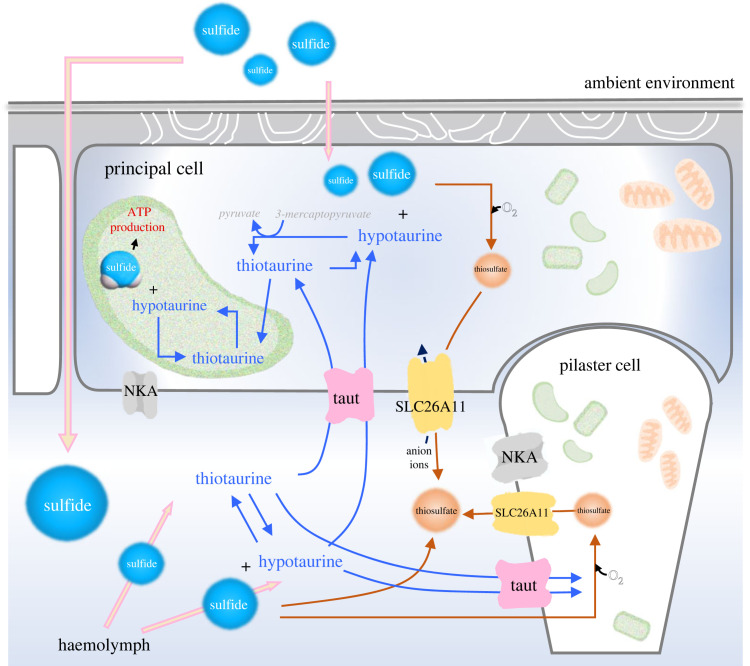Figure 4.
Putative organization of sulfur metabolite exchange and chemoautotrophic symbiotic relationship in gills of X. testudinatus. Reduced sulfur compounds (thiosulfate or sulfate), and sulfide-binding amino acid (hyprotaurine) are generated from sulfide and transported by SLC26A11 and Taut to minimize sulfide accumulation in the haemolymph. In gill epithelial cells, hypotaurine reacts with diffused sulfide to form thiotaurine. Thiotaurine and reduced sulfur compounds (including thiosulfate) may thereafter be translocated to the sulfur-reducing bacteria, where they can be further oxidized to yield ATP and reduced metabolites. ATP and reduced metabolites may then be used in part to drive net CO2 fixation. Some fraction of the reduced carbon compounds synthesized by bacteria may be translocated to the animal host. The mitochondria and bacteria were shown in orange and green, respectively. Na+/K+-ATPase, NKA; SLC26A11, solute carrier family 26 member 11; Taut, taurine transporter.

